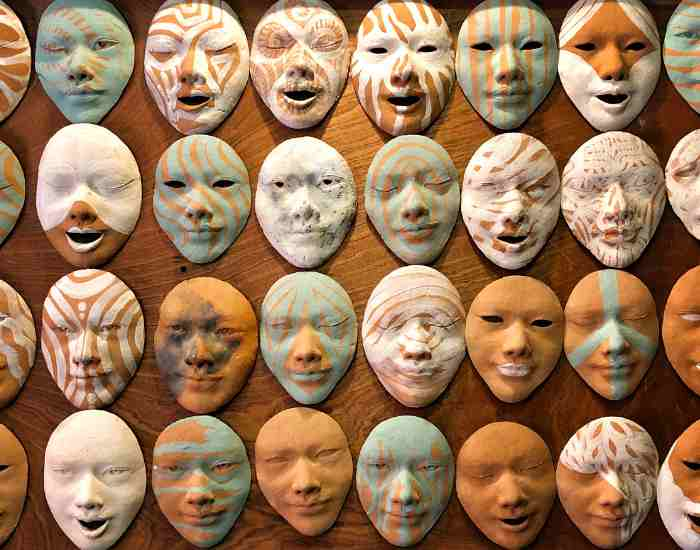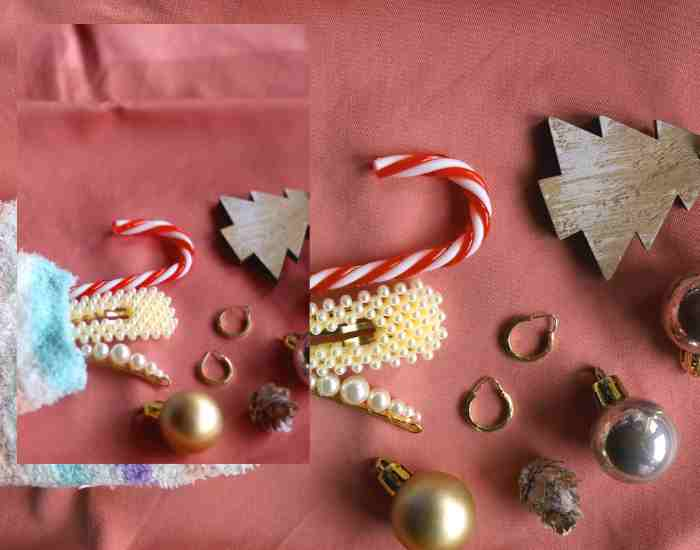All my life I’ve been an artist and a copywriter, and due to my education, I am an artist, who creates works of art that are emotion-focused. However, there’s always a concern embedded within this, and that concern relates to how one takes the whirlwind within one’s heart and extracts the stream in order to pour it onto an art piece. Nonetheless, there exists an overwhelming satisfaction in attempting this challenge – it is the sense of satisfaction that is not just catered for the maker but the person who beholds it as well. I think it is this quality of transformation and power that gets one to appreciate art therapy, in which, I observed for myself what can art do for our understanding, mostly of ourselves, but also of other people.
To add to that, understanding the emotional core of an art piece goes beyond simply the beauty of its external form. It fulfills a function of a generic kind that brings together people from across the universe, it is a silent language that speaks volumes in terms of feelings, histories, and experiences. Not only that but it can supplement development of emotional intelligence, which can allow us to not only be conscious of and regulate our feelings, but also, be able to feel for others.
In this blog, I intend to demystify the intricacies of this process, provide practical advice and recommendations on incorporating feelings in your pictures. We will focus on the various aspects of color theory, the nuances of mimics, and the expressive capabilities of body language. All these elements are the basic aspects of a picture which if properly integrated are instrumental in transferring the complete emotional message of a piece of work. So, if you are a beginner aspiring to practice more art or if interested in cultivating a deeper understanding of emotional art, this journey is meant to broaden your artistic story and help you produce works that are visually rich and appealing.

The Psychology of Emotion in Art
Every Sign, every stroke and every title has inside it an emotion an opinion, a story. The understanding that emotion can be expressed through each of those strokes is the intersection between art and psychology. Art therapy is a field that combines the imagination with something deeper and aids in drawing for instance to understand the great realms of human emotion. Such a technique does not simply help in expressing an emotion that cannot be communicated verbally, but it assists in comprehending the feeling itself.
Color psychology is perhaps one of the more interesting parts to consider when learning more about the connection between art and psychology. The fact that the visual spectrum can dictate out emotions is quite remarkable. For example a blue color is scared and affectionate in nature while the color red is passionate and even scary. Realizing and understanding this fundamental can increase the intensity of emotions in your drawings. If you choose colors suitable for the emotions you want your audience to feel, they will understand the essence of anger, sadness, happiness and everything that you want them too.
Analyzing A Master’s Work
It is essential to understand the emotional potential of art through the lens of the masters to be able to appreciate a creation. For instance, Vincent Van Gogh is indeed a great example of a person who vividly depicts the use of color, brush strokes, compositional setting, etc. to evoke differing emotional states in one’s self. His paintings are absolutely filled with all kinds of emotion, they are like portals to his mind, giving us a glimpse of his solitude, his outbursts of laughter and happiness, and even his dark times.
Such pieces of work are not simply meant for enjoyment and entertainment, rather they hold greater value in interpreting the way an artist thinks, and more importantly in this case, how art influences a person. They also provide an understanding of how art has the ability to go beyond what is seen and become more capable of conveying emotion. They treat us to the understanding that everything beautiful is not art, what is art is that which is real and what is real is that which is raw and felt.
To incorporate similar emotions as those of these artists, we need to focus on certain elements present in their artwork. For the most part, it is not about copying the techniques, but rather learning what they are trying to convey and creating something entirely new. The creation of this study is a form of us reaching the trauma, the feeling that the whole humanity has gone through which brings us closer to creating a feeling in our works that people will feel when they see or read.
How to Show Feelings – Emotion Techniques
The human face is a lucid book where Lines, curves and shadows are endless stories waiting to be told. In order to achieve that in your artworks, let us look at the stepwise approach of how to draw facial expressions in pictures and how to make that different and more exciting than the rest:
- Eyes- Eyes are considered the windows to the soul, and are critical when it come to expressing emotions, especially positive ones. If someone is joyful, the eyes might twinkle with laughter, and the corners of the eyes crinkle, while when someone is sad, the eyes do droop like a flamingo.
- Mouth- Smiling mouth angles come as a signing of upturned mouth where a person is talking emphatically about something positive. On a negative end, downturned mouths talk about sadness and disdain.
- Eyebrows: Instead of perceiving them as mere lines of hair, do consider that they play a vital role in the human quest of your cum face. The movement of the muscles around the eyebrows is an indication of something, emotions to be precise; for instance, raising the eyebrows could imply happiness or fear and furrowing one brow pulls together, can depict anger or even concentration.
- Nose and Cheeks: For sure, more than wheezing, the act of flaring your nostrils can suggest a misuse of emotions coupled with a wrinkled nose with flush cheeks, indicating anger, embarrassment and so forth.
However, their impact is just as important the impact of body language. Through the posture of a character, one can gauge the emotion the character is feeling. If the character poor back is bent, it could indicate that he is defeated or just sad, while if a character carries himself upright it could mean he is confident or is full of joy. Also, how one moves, the stance they take, and how they hold themselves in respect to others around them or everything else in this case adds to the emotional aspect, which is portrayed through imagery instead of words to give the viewer an insight into the art on a different level.
The Role of Colour and Light
Turning to colour theory or red theory for that matter shows the potential and impacts colours have on the drawing or just the art altogether. Warm colours are the first thing that comes to one’s mind when thinking of energy and rage; red, orange and yellow are some examples of warm colours. Conversely, blue, violet and green colours appeal to sombre feelings such as sadness. It is no more a secret that this contrast assists artists, especially drawers in achieving their desired effect or look of the work created.
Lights and shadows indeed compliment this phenomena, creating richness. Let’s say how an artist used light in a canvas. A person focuses on how bright this canvas is and what emotions it evokes, particularly interesting may be the parts that creates shadow.
Composition and Perspective
The composition of the elements in the drawing may be crucial in this aspect. I mean, through structure you can also influence the way in which the viewer visually moves through the work of art and focus on the areas that you want to stress.
Perspective is another perspective of the artist, which is more effective than pulling ones eyes to the part where all the actions are happening, or a part of a character. Manipulating perspective, one can induce the viewer a sense of being up close, far away, or even lost. All of which determines how one’s emotions can be felt and interpreted.
The experimentation of these techniques is crucial for discovering the emotional nuances of your artwork. The potential of depicting emotions through the articulation of thoughts and emotions via faces and posture, color and lighting, or telling a story with the arrangement and angle of a shot, is worth exploring – it will certainly aid in finding the best method of portraying various feelings of people. Moreover, the use of abstract art principles feels one more avenue to depict sentiments and emotional states and at the same time surpass the confines of traditional portrayals and invite the viewers into an intimate realm of feelings.
Artistry comes with helpful hacks and different ways to navigate through the scene seamlessly.
The limitless world of art is dependent on the will to test new boundaries. It does not matter whether you have just begun your journey as an artist or are a veteran, what is more pressing is how the voyage of understanding emotions best through art is never-ending but is rather enhanced through roaming about and discovering something new. Working with different forms of canvases and art styles alongside the ever-changing digital space presents a whole new dimension to showcasing the infinite range of human emotions.
At the end of the day, looking for perfection isn’t the main goal because the essence of experimentation is much deeper and involves a sense of reaching out to your artistic spirit. By doing so, you are able to dig from your wide toolbox with the ability to cover different techniques, be it old-school or the most contemporary styles, that allow you to effectively communicate a myriad of feelings. However, this process of experimenting is not only trying to find different ways to show emotions, but rather finding your place in a world where other illuminators have already existed.
Besides the technical aspects, art’s emotional communication relies on the experiences and emotive components that inform the work. Connecting with content, making sense out of it, and evaluating your emotions enhances your artistic language to better reflect emotions from an angle that cuts across extremes. Engaging in these practices helps not only the expansion of the ability to depict emotions in arts but also helps in building a stronger bond between the creation and audience’s hearts.
Reference and Inspiration
The environment we live in is filled with emotions, where every action captures a moment in an everlasting memory. In order to uphold the integrity of these emotions, looking at pictures alone or even studying and documenting real-life versions of facial expressions and movements is worth its weight in gold. The references act as a standard that makes it easier for your mind and hand to interpret the emotion in space. Once you have such a reference point, you are able to render the emotions easily and accurately, in a manner that cuts across cultural and language barriers to communicate effectively with the viewer.
But right, the fountain of inspiration is not only in the physical realm. The most common area of inspiration can come from within, sadness, joy or any other moment from your life that motivated you. Art is a remarkable possibility to take the everyday experiences and give them a deeper meaning, creating art and aesthetics in the process. The reinterpretation of your history brings exposure and feeling into your art, turning the individual into an insider of the many, making it to penetrate into the very core of man.
FAQs
What are some ways I can incorporate art therapy strategies into my drawings as a means of expressing myself more effectively and in more comfortable ways?
Incorporate art therapy strategies into your drawings and be in a much better position to express yourself by concentrating on the drawing approach rather than the outcome. Allow yourself to express your feelings in an unrestricted manner and utilize your drawings as a creative means of doing so. Use images and colors that convey an intended meaning for you or are popularly accepted to express certain emotions. This technique adds more meaning to your drawings, concerning emotions, and acts as a form of therapy helping you understand and express your feelings in better ways.
What is drawing related to emotional intellection and how is it improved?
Drawing is an art that invokes creative emotion in the artist, pursuits that configure around the usage of drawing activity might be a good approach in understanding the creative side of people. Facially expressive drawing which is depicting different views and representations of people’s faces for example drawing happy faces, sad, or angry faces can be a start. You can also take drawing a bit further by creating pieces that are personal to you by drawing what you feel in response to moments in the memory; what emotions these moments invoke in you. All of these practices reason you to contemplate about your emotions and develop a deeper understanding of yourself and others in return.
Is there any emotion conveyed in Abstract Art?
Sure Art is an abstract creation, meaning it is not limited in how it can be interpreted in different ways, and emotions are something that can be articulated through language but is something abstract in itself. Memories in a strategic manner can be turned into shapes of human faces or objects which can have different meanings for different people. This allows people to literally put a part of themselves into the artwork as they might shift their own emotional perceptions onto that canvas. Hence, ‘Abstract’ becomes a way in which an idea may be constructed and presented by an artist but is at the same time compromised by the audience’s interpretation of the same idea.
Conclusion
As we round up our discussion on the expression of emotion in drawings, it has been evident that art is powerful to the processes of understanding oneself and other people and even healing for individuals. Putting emotions into paint or ink is not merely an artistic activity, but rather an activity that connects one with the world and another one with many.
At the core of this effectively functional expression of the emotion and art form is salient issues of engagement, exposure to new things and the reality of drawing and painting experiences. These are the pre requisites or the building blocks where emotions that encapsulate the artistic includes expression that any individual would comprehend, and which words fail to articulate.
In the end, while understanding that every artist is different, and every artist has a story and a voice — it is still possible to explore the artistic universe even when there are internal blocks and insecurities. Pursuing this excursion is reflected not in the emotions of others that you try to recreate, but rather in the emotions that you have come to experience that you want to express through art.
More Post





